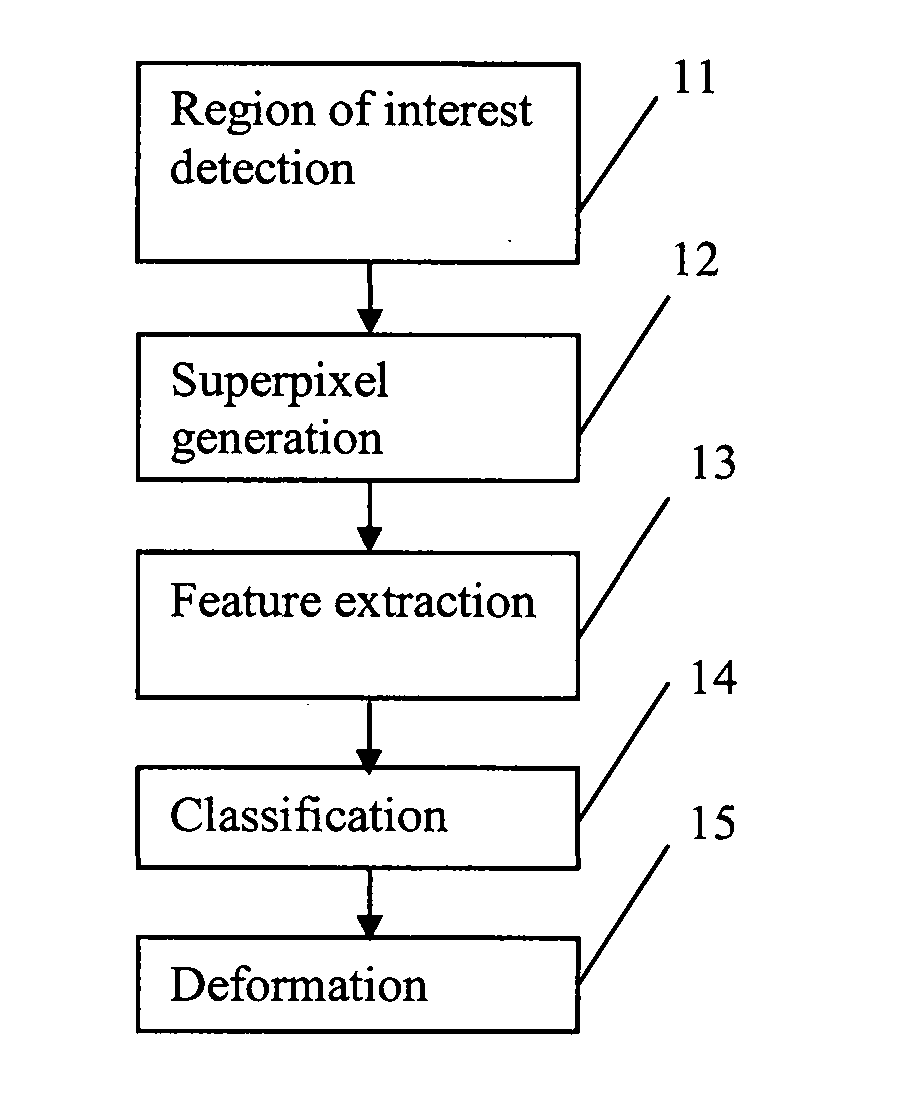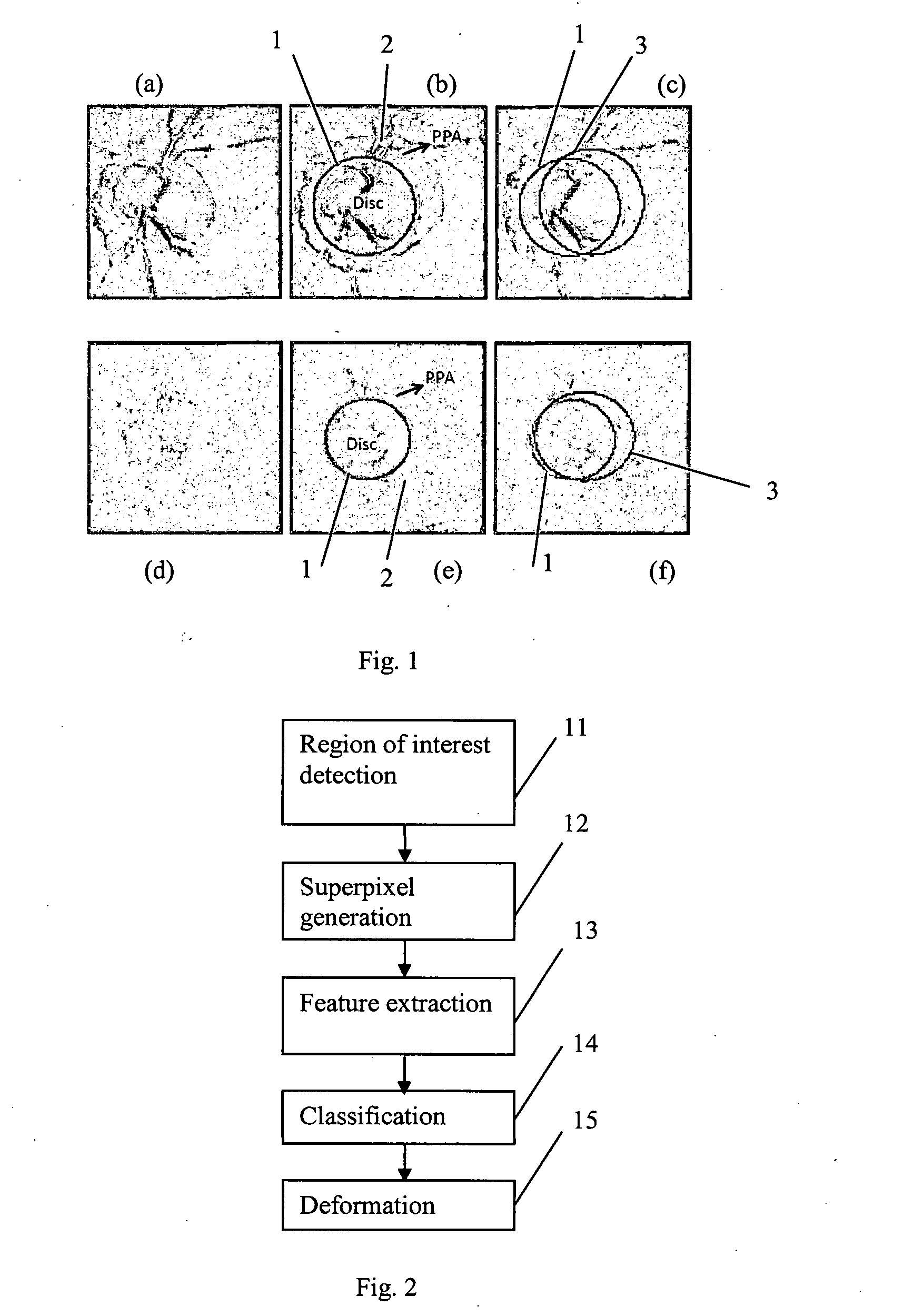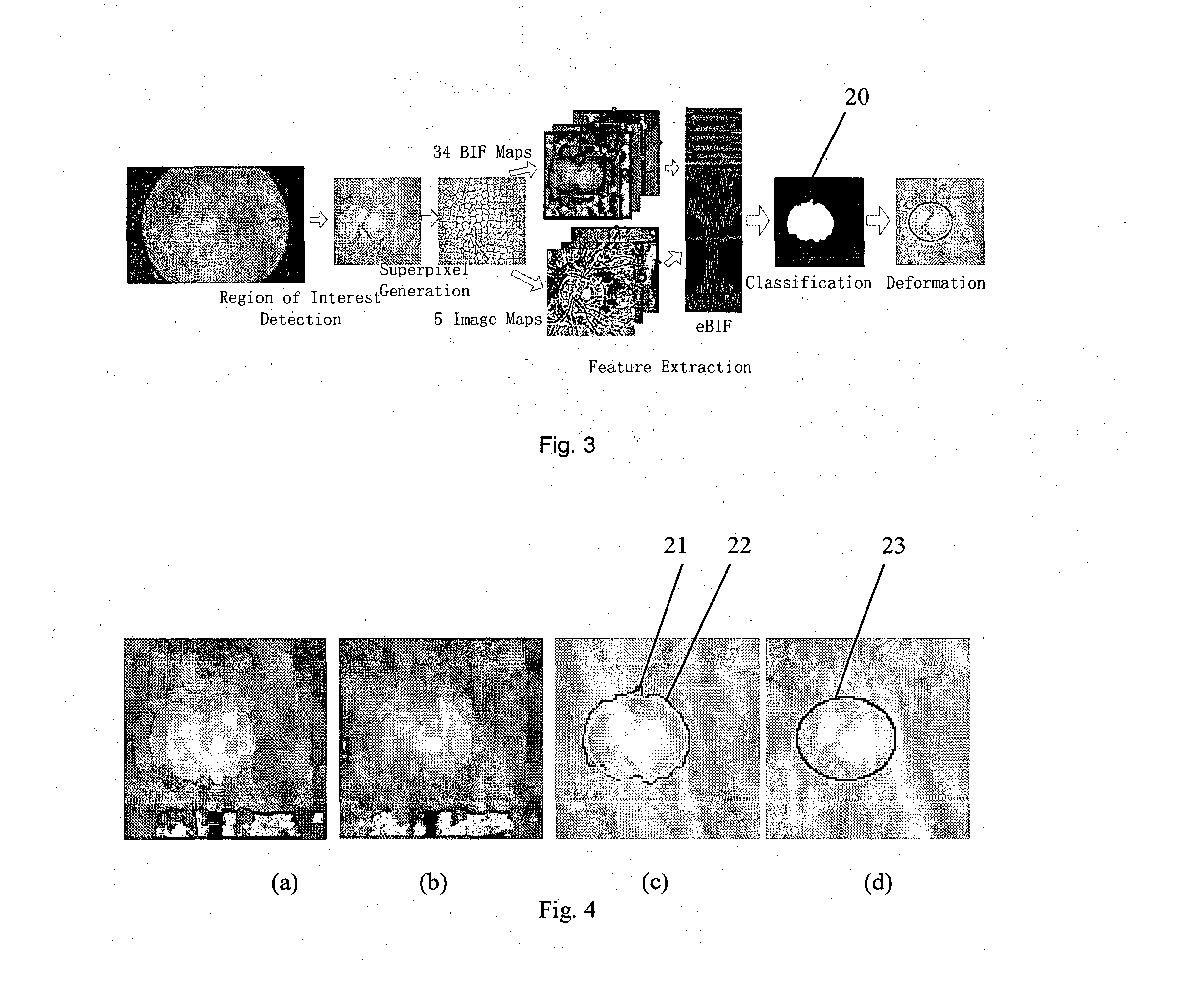Methods and systems for automatic location of optic structures in an image of an eye, and for automatic retina cup-to-disc ratio computation
a technology of automatic location and optic structure, applied in image generation, image enhancement, instruments, etc., can solve the problems of slowing down the progression of disease, loss of peripheral vision, and patients' complaints of vision loss, so as to reduce the workload of medical professionals and reduce the likelihood of occurren
- Summary
- Abstract
- Description
- Claims
- Application Information
AI Technical Summary
Benefits of technology
Problems solved by technology
Method used
Image
Examples
first embodiment
ntation
[0039]FIG. 2 shows the steps of a method which is a first embodiment of the invention, and which performs OD segmentation. The input to the method is a single two-dimensional retinal fundus image of the eye of a certain individual (or, in variations of the method, multiple fundus images of the eye). In a first step 11, a region of interest is detected by an optic disc localization step. In superpixel generation step 12, the region of interest is divided into sub-regions referred to as “superpixels”. In a feature extraction step 13, for each of the superpixels, extended biologically inspired features (eBIF) are computed from 34 biologically inspired feature maps and 5 image maps. In a classification step 14, they are used to classify the superpixels as disc or non-disc, so as to obtain a first partitioning of the region of interest into disc and non-disc sections. In a deformation step 15, deformation is applied to fine tune the disc.
[0040]The process is illustrated schematica...
second embodiment
tation
[0069]The optic cup is a central portion of the optic disc. Very few methods have been proposed for optic cup segmentation from 2-D images. Some of the present inventors have proposed the AGALI and AGLAIA techniques, which included thresholding followed by deformation methods. Because in many images there is no change of intensity at the optic cup boundary, additional information has been used, such as seeking small vessel bends (“kinks”) which anatomically mark the cup boundary. However, correct identification of kinks presents a challenge, and some retinal images do not exhibit kinks.
[0070]The second embodiment of the invention employs a superpixel-based approach for optic cup segmentation. The procedures for the superpixel-classification-based the optic cup segmentation are similar to those for optic disc segmentation and summarized in FIG. 5, and FIG. 6 shows schematically the data produced at each stage of the process. The cup segmentation may be done after the optic disc...
PUM
 Login to View More
Login to View More Abstract
Description
Claims
Application Information
 Login to View More
Login to View More - R&D
- Intellectual Property
- Life Sciences
- Materials
- Tech Scout
- Unparalleled Data Quality
- Higher Quality Content
- 60% Fewer Hallucinations
Browse by: Latest US Patents, China's latest patents, Technical Efficacy Thesaurus, Application Domain, Technology Topic, Popular Technical Reports.
© 2025 PatSnap. All rights reserved.Legal|Privacy policy|Modern Slavery Act Transparency Statement|Sitemap|About US| Contact US: help@patsnap.com



